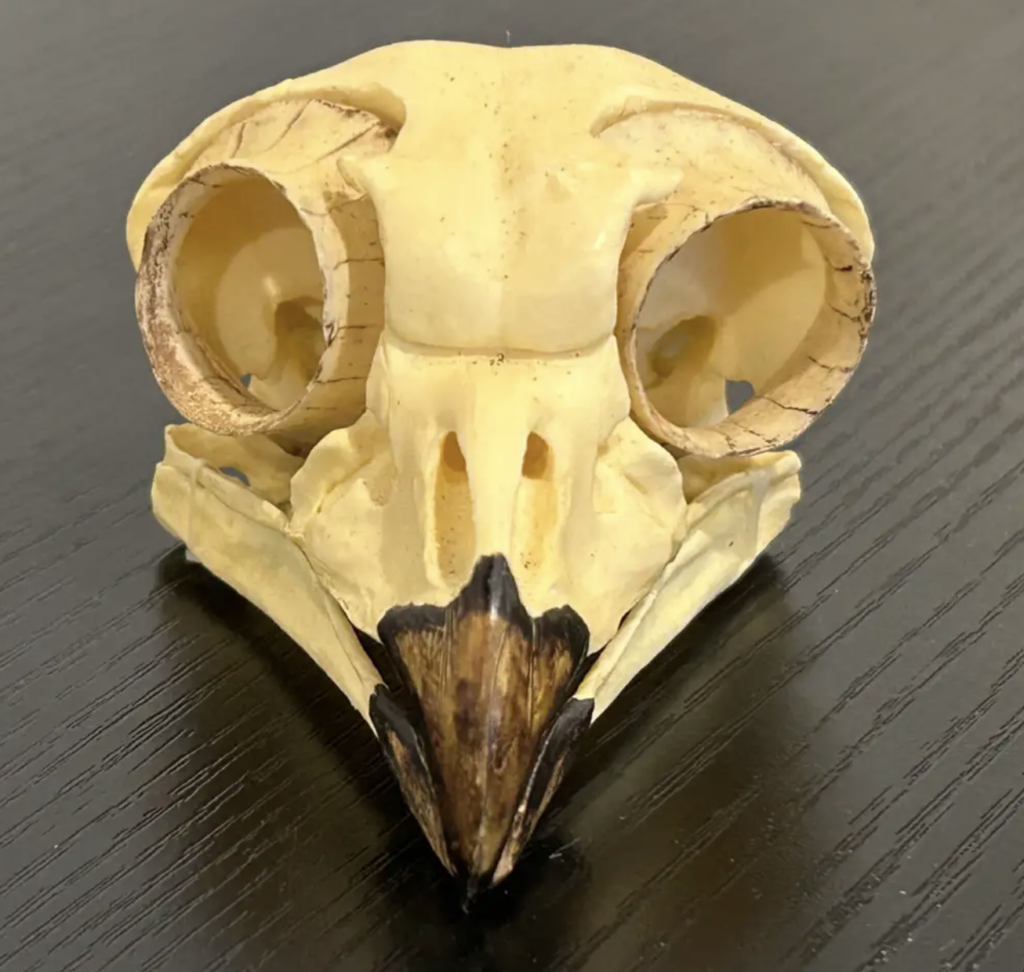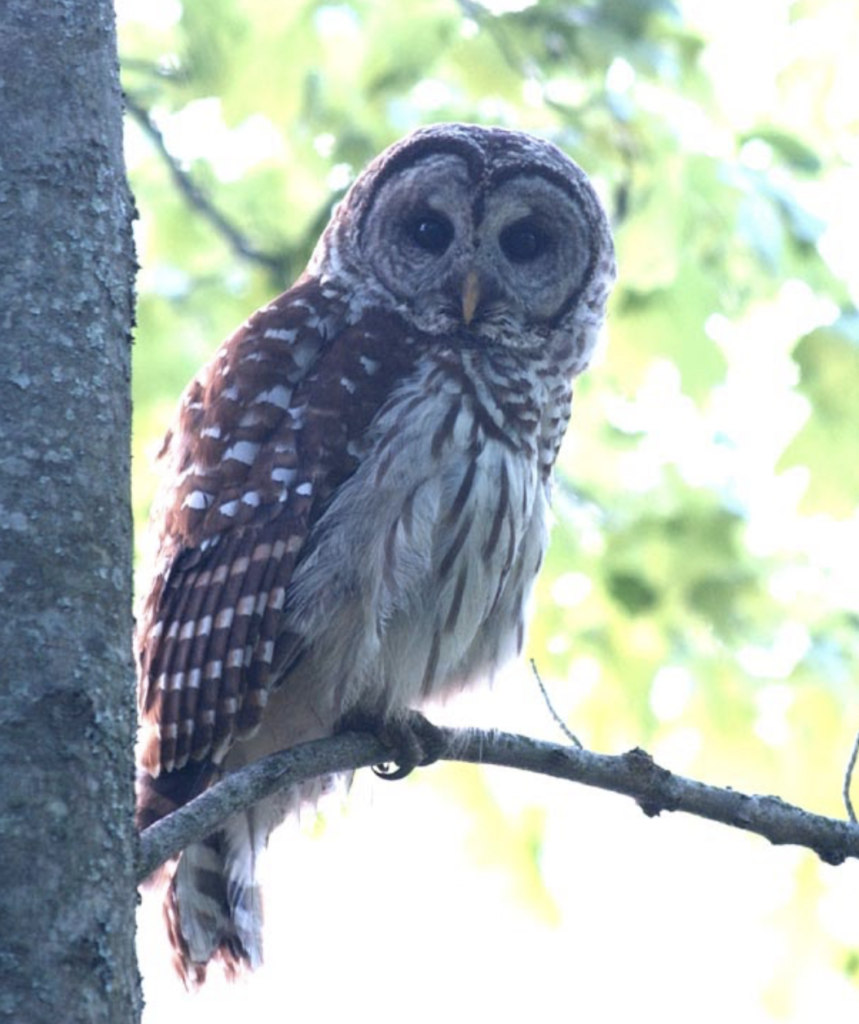Isabella Bautista | November 11th, 2024
Owls are known for their “wise” appearance, perhaps attributable to their large, pensive-looking eyes and their feathery facial disc that gives the appearance of stern eyebrows. Though institutions like Duolingo and Temple University have transformed the owl into a pop-culture symbol of knowledge, the owl’s distinctive face actually serves a vital evolutionary purpose: a specialized tool for extraordinary auditory acuity.
Its round, concave face functions much like a parabolic microphone used by sports broadcasters during football games to hear the plays being called many feet away on the field, directing all sounds that hit its wide surface along parabolic paths into the center of the disk. In addition, parabolic microphones amplify the strength of the sound signal as it nears the focal point, further contributing to its usefulness for hearing from great distances. In the owl’s case, these parabolic paths are tailored to funnel sound — perhaps made by prey — toward its ears instead of a focal point in the disk’s center.
The owl’s skull structure betrays the round appearance of its feathered face. Instead of having a wide, flat front as you might expect, its skull slopes down from the top of the head to its beak, much like the outward structure of other birds’ faces. Its skull structure hints at the fact that the unique curvature of the owl’s face is actually made up of feathers, allowing for greater flexibility in localizing sound.

Photo courtesy of Dr. Ken Catania
If you’ve ever looked closely at an owl, you might have noticed that its facial features are slightly asymmetrical: the right half often sits slightly higher on its head than the left. Likewise, the owl’s right ear also sits in a higher horizontal plane than its left. This asymmetry also helps enhance sound localization, allowing it to channel sound waves to the ear closest to the origin of the sound. Thus, sound reaches the two ears at different times. By using cues about the time delay of the sound waves between its ears, owls can pinpoint the direction of their prey, giving them a massive selective advantage in hunting in complete darkness.

Photo courtesy of Dr. Ken Catania
The owl’s asymmetrical face and ears represent a finely tuned system that makes it a master of the night. Its ability to detect even the faintest rustle of prey from great distances shows how nature has adapted these creatures to become expert hunters, perfectly suited for their nocturnal lifestyles.
Cover photo courtesy of Dr. Ken Catania
References
Backman, J. (2002). Parabolic Reflector Microphones. Audio Engineering Society, (5499). https://doi.org/ttps://aes2.org/publications/elibrary-page/?id=11379
British Trust for Ornithology (BTO). Owl Hearing. British Trust for Ornithology. https://www.bto.org/our-science/projects/project-owl/learn-about-owls/owl-hearing
Catania, K. (2024, November 7). Lecture 22: Barn Owls. Neurobiology of Behavior.
The Owls Trust. (2022, June 1). Understanding owls. The Owls Trust. https://theowlstrust.org/owl-education/understanding-owls/
“What a gem I’ve discovered! The thoroughness of your research combined with your engaging writing style makes this post exceptional. You’ve earned a new regular reader!”